How the Design Trends of 2022 Will Influence the Innovations of 2023
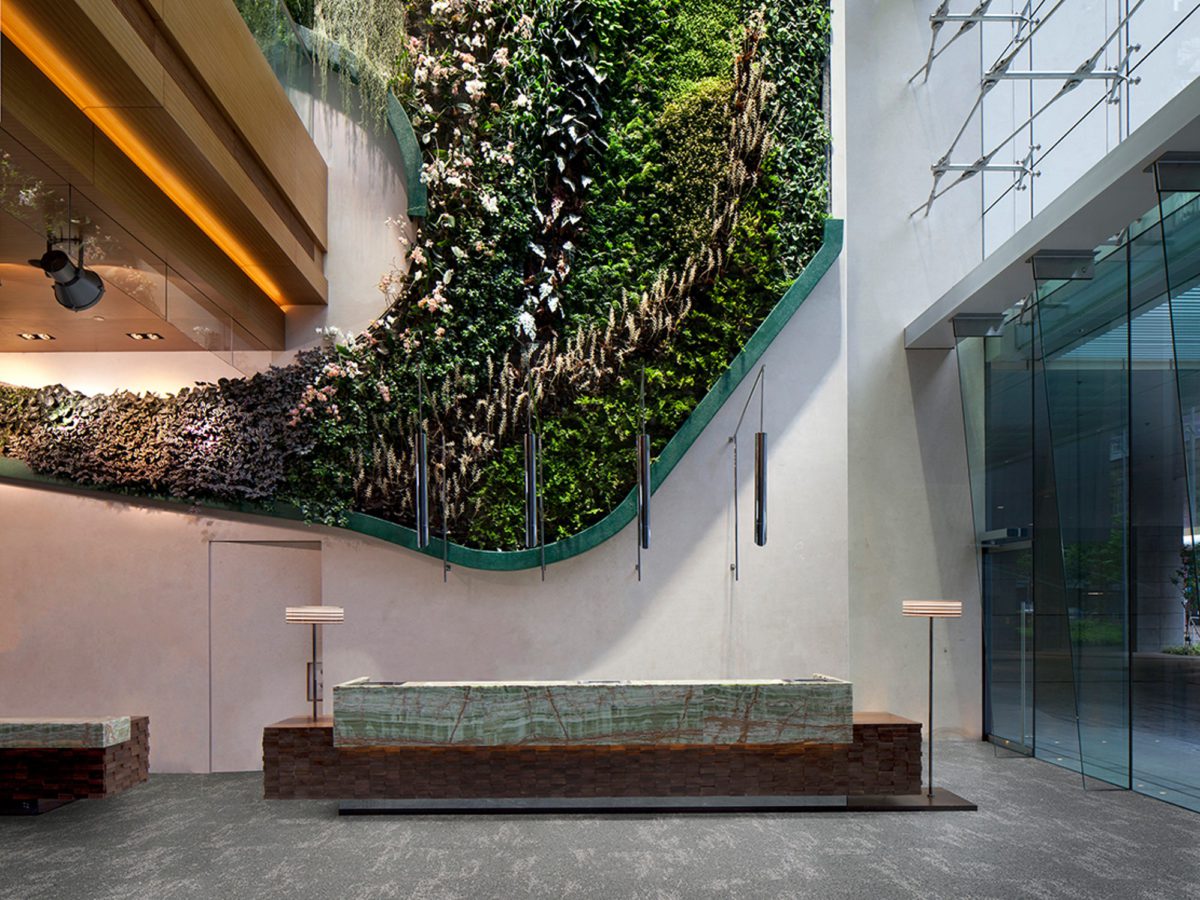
modulyss Handcraft Collection, Leaf
As I reflect back on this year, I recognize it as a critical period of transition. After two years of quarantine and social distancing, we’ve slowly been returning to the office, in-person gatherings, travel and large conferences and events. This transition has impacted the way we think about our homes and offices, empowering us to reimagine these spaces to be more flexible to our needs (which we now know can change at a moment’s notice).
The last few years of being stuck indoors has also inspired a biophilic design movement to bring us closer to nature, even in our own homes. While the push for natural design has also encouraged the use of more sustainable, organic materials, I anticipate the trend of more radical design in 2023: from bold colors and retro patterns to a circular mindset where designers challenge greenwashing and are critical about the materials they use.
Let us take a look back at how design has shifted in 2022 and what trends and movements we can expect in the coming year.
2022 in Review: Flexible & Biophilic Design
In 2022, we started reimagining rooms and buildings as multi-use spaces that adapt to us rather than the other way around. People who are now working in their living rooms during the day, working out in the same space in the afternoon and relaxing on the couch in the evening have been looking to designers to help define these spaces without feeling cramped or having to move furniture every few hours. Commercial real estate agents and companies with hybrid working models are seeking modular office layouts that can be easily adapted to the needs of their clients and employees, respectively.
Milliken’s Coastline Collection is perfectly suited to this trend of adaptability, designing carpet tiles with innovative materials like ECONYL® regenerated nylon that can help define spaces within a single room. Artistic room dividers like alcarol’s ocean-inspired wave screen also support space-specific needs without minimizing the room through large walls or obstacles.
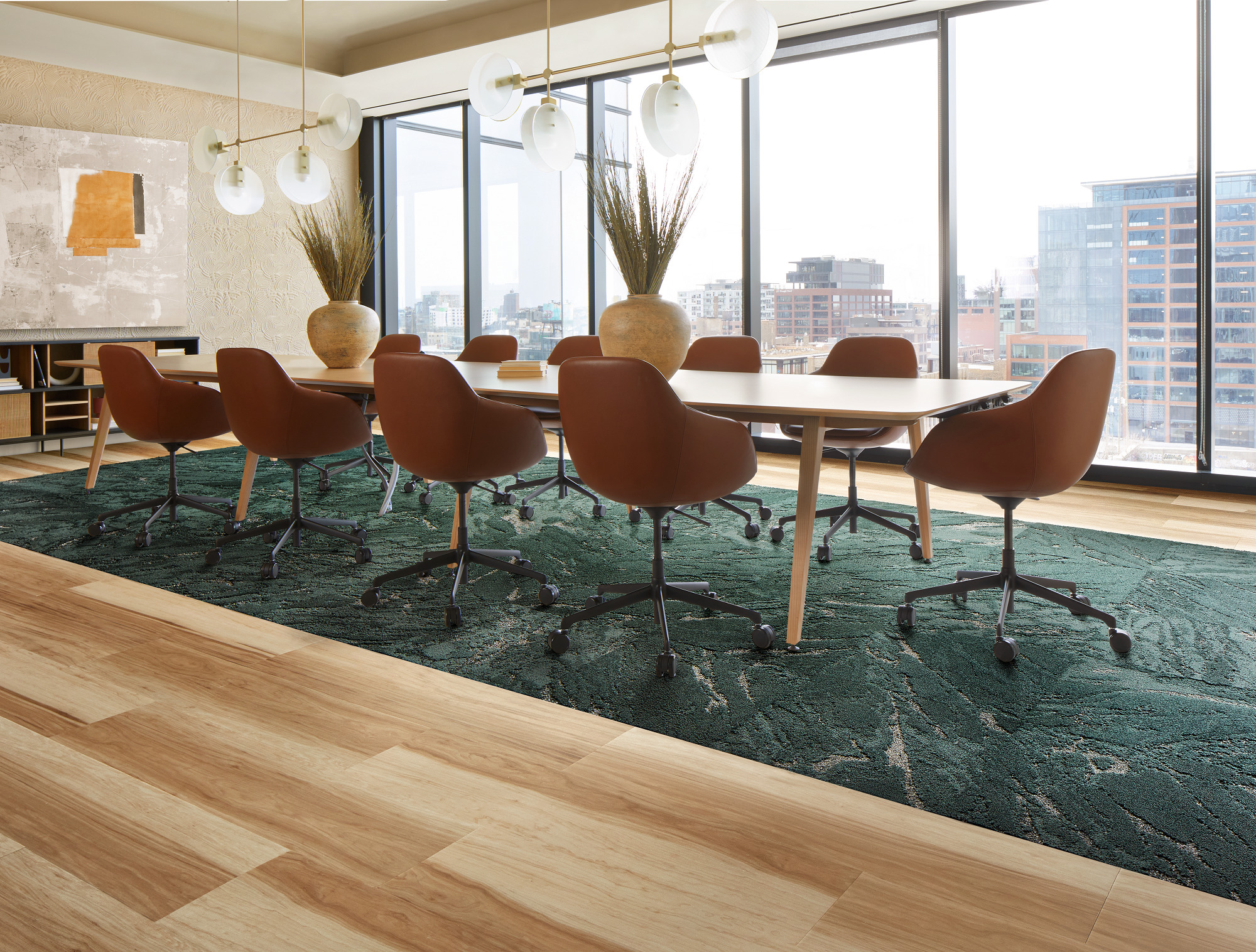
Interface Beaumont Range Collection
Drawing inspiration from the ever-changing beauty of mountain trails, Interface’s Beaumont Range Collection reflects another growing trend we saw in the last year: biophilic design, connecting humans to nature by bringing elements of the outdoors, in. A study by Human Spaces has proven the positive impact of biophilic design elements on mental and physical health, which has been especially critical in the face of the pandemic. Designers have increasingly leaned into natural color palettes, textures and materials. Delos, for instance, recently introduced their Heartland collection rugs which offer a warm, textural and natural feel – designed with ECONYL® nylon and New Zealand wool. These biophilic design elements were heavily on display at the 2022 NeoCon conference as well, with new knotted and woven textures like macrame in the spotlight.
Between natural, organic materials and flexible layouts, sustainability played a larger role in the choices designers made this year. Designers recognized that the materials they work with matter. If a space is going to be flexible, we can’t discard and replace furniture and flooring at the pace we have been. Instead, we must choose products that are responsibly sourced and produced as well as easily deconstructed for recycling. I imagine the education surrounding this topic will take center stage in 2023.
2023 Outlook: Retro, Radical Innovation
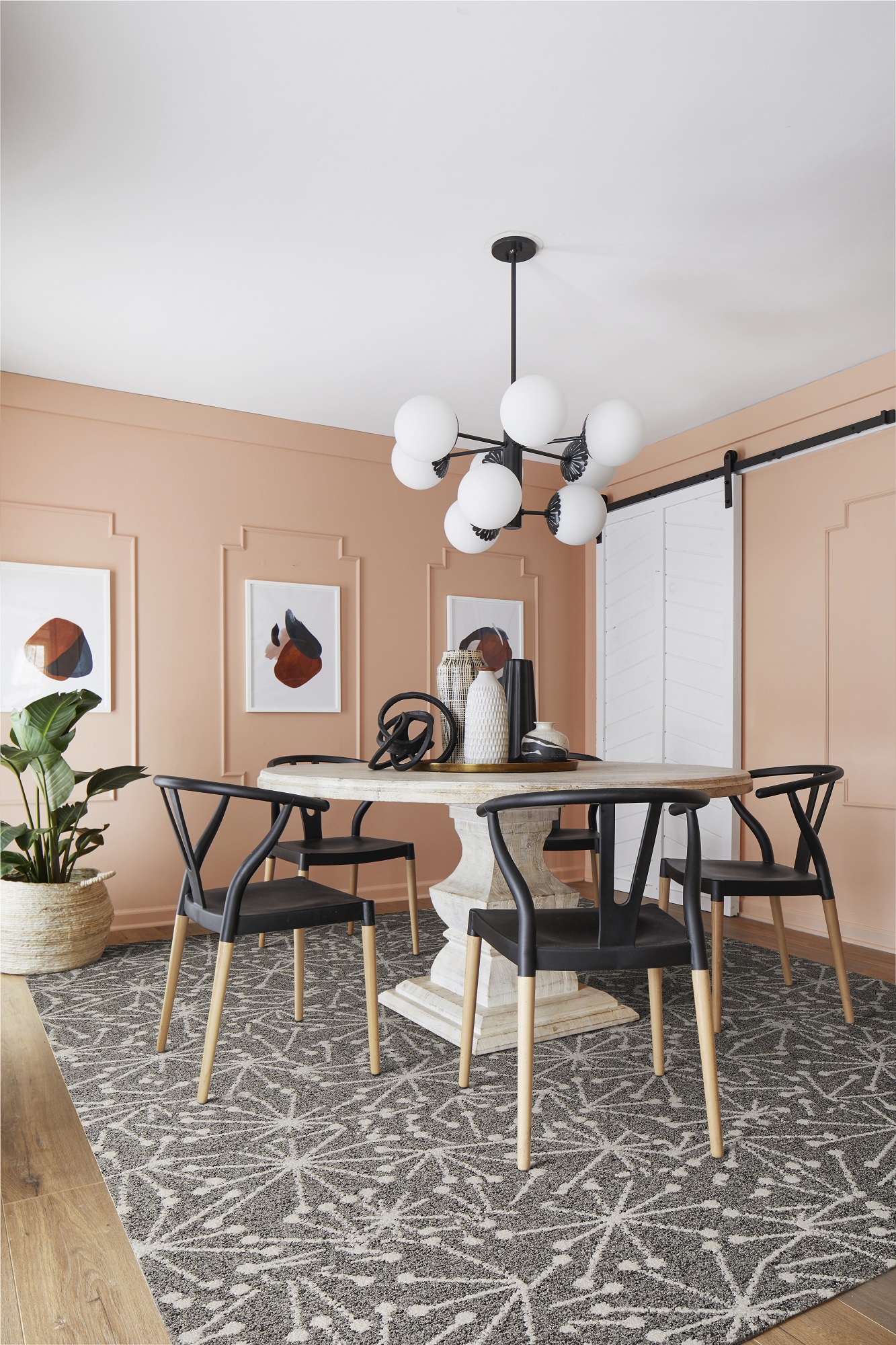
FLOR Fall 2022 Collection, Mod Cafe
Retro design is back, but it’s not a complete shift from the biophilic trends we’re still seeing in homes, offices and commercial spaces today. The bold colors and eclectic patterns of the 80s and 90s are balanced by the natural wood panels and pastels that were popular in the 70s. I expect that the new retro trends will complement the continued use of biophilic design in the coming year.
The vibrant 2023 Pantone Color of the Year, Viva Magenta, confirms our anticipation for a brighter, bolder year of design. A shade rooted in nature, Viva Magenta inspires us to stand out from the crowd and express ourselves without restraint.
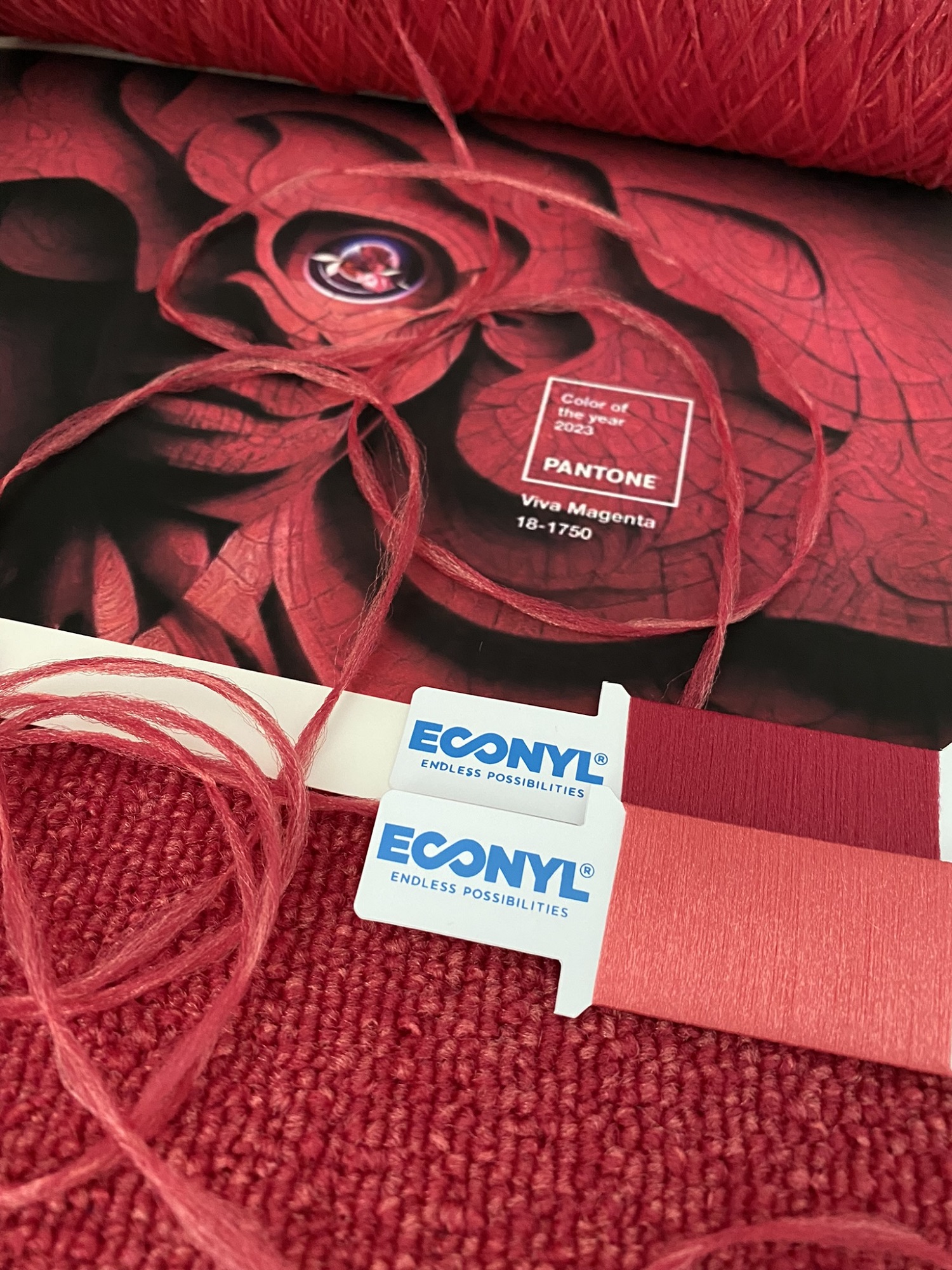
While some of the upcoming design trends are pointing toward the past, I anticipate that we’ll also see a design mindset that is future-oriented. Perhaps the bold yet natural elements of the retro trend will also inspire designers to be bold in conversations and actions surrounding circular design. The time for a slow transition has passed. If we want to keep designing on an infinitely creative level, we must make a radical shift toward a circular economy. Otherwise, our finite resources will be depleted and we will be surrounded with more trash than treasure.
No designer I know imagines the piece they put time and creativity into sitting in a landfill. Why not instead imagine the possibilities of that piece becoming the building blocks for another designer’s creative pursuit, again and again in an infinite cycle of innovative creation?
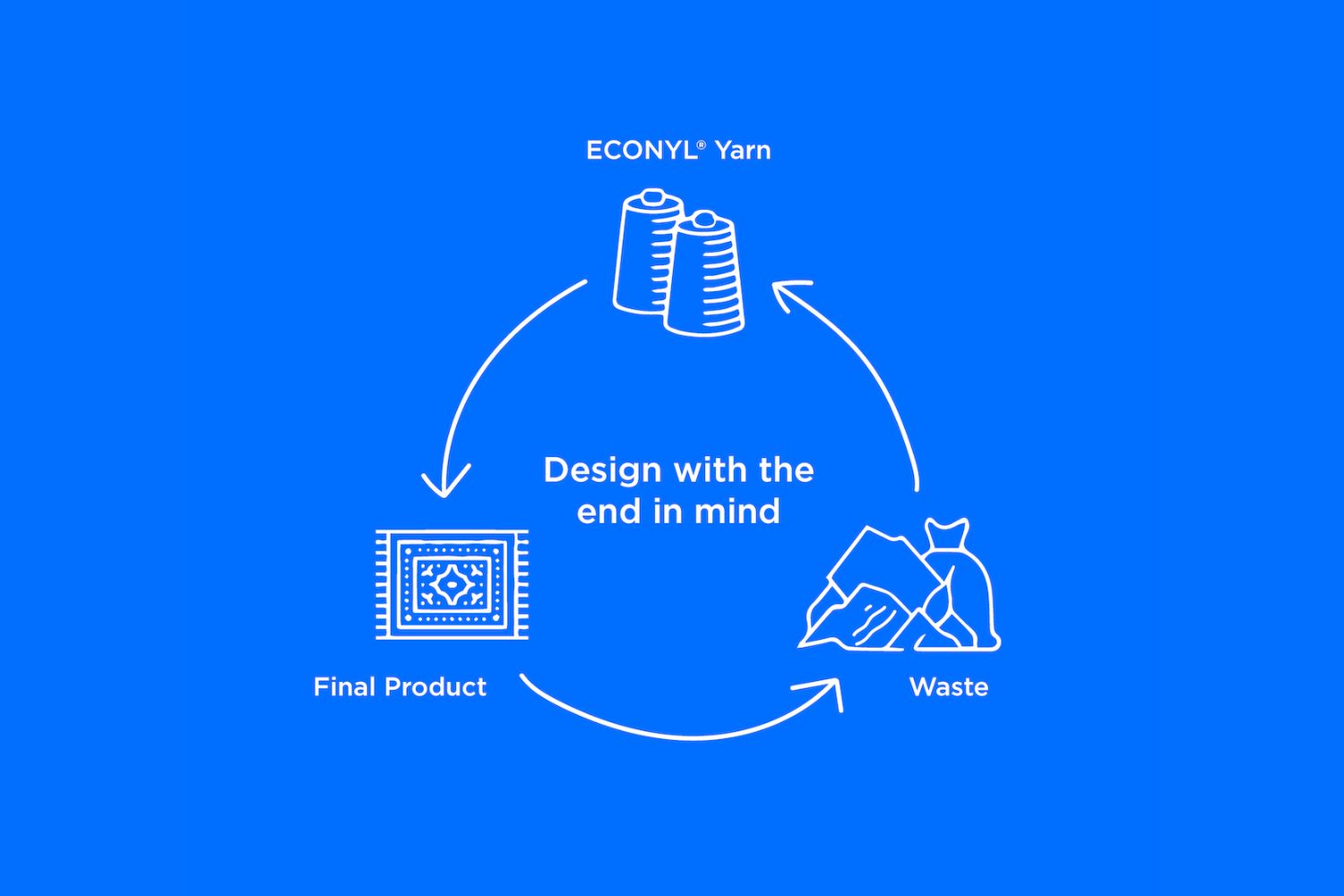
The mindset shift designers need to make is that trash can be treasure. Rather than extracting resources to create new ingredients for our designs, we can recycle, repurpose and regenerate existing materials that would otherwise fill our landfills. This circular mindset considers the entire value chain of a product, from how ingredients are developed to how a product is used and discarded and what happens to those materials when the product reaches its end of use.
When asked about the next step for the circular economy, Marcus Engman, chief creative officer for IKEA, responded that circularity is about this mindset shift rather than achieving certain phases. He explained that “we’re moving into a future where waste is the raw material. It’s about designing from the bottom up, and thinking in components.”
How We Can Achieve a Radically Sustainable 2023
To start this mindset shift of trash becoming treasure, designers must first recognize their role in the overall design system, from the system that creates their product to the system in which it will be recycled. Taking this bird’s eye view enables us to then unlock value at each stage of the process, collaborating with stakeholders to understand the consequence of each choice along the way and how a practice or material can be made more sustainable.
The first change designers can and will drive in 2023 is their choice of materials. Materials have an impact, no matter what the source is, and designers must determine how to minimize that impact. They must consider the cost of their materials: not the initial payment for buying a specific yarn or plastic, but the future cost when that material is sitting in a landfill.
In the coming year, I foresee a trend of true sustainability in design following an increase in education and innovation regarding our materials. Producers and manufacturers will be challenged to not only use recycled materials, but create materials that can be recycled and repurposed at their end of use. This challenge will come from consumers, 57% of whom are willing to change their purchasing behavior to help reduce negative environmental impacts, and from companies, an exponentially increasing number of which are making net-zero commitments.
We are in an exciting time as designers. Let us take this great opportunity to step up and speak out in 2023 and beyond, challenging our industry and community to create and use innovative materials that don’t sacrifice quality or style.
Author: Gaëlle Merlin, BCF Design & Development Manager, Aquafil Group
Latest from the Blog